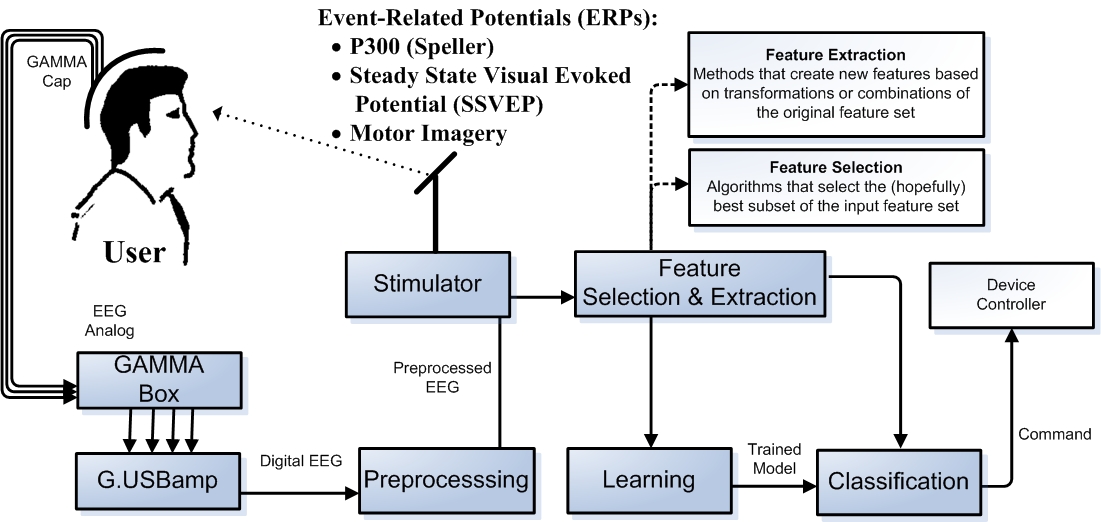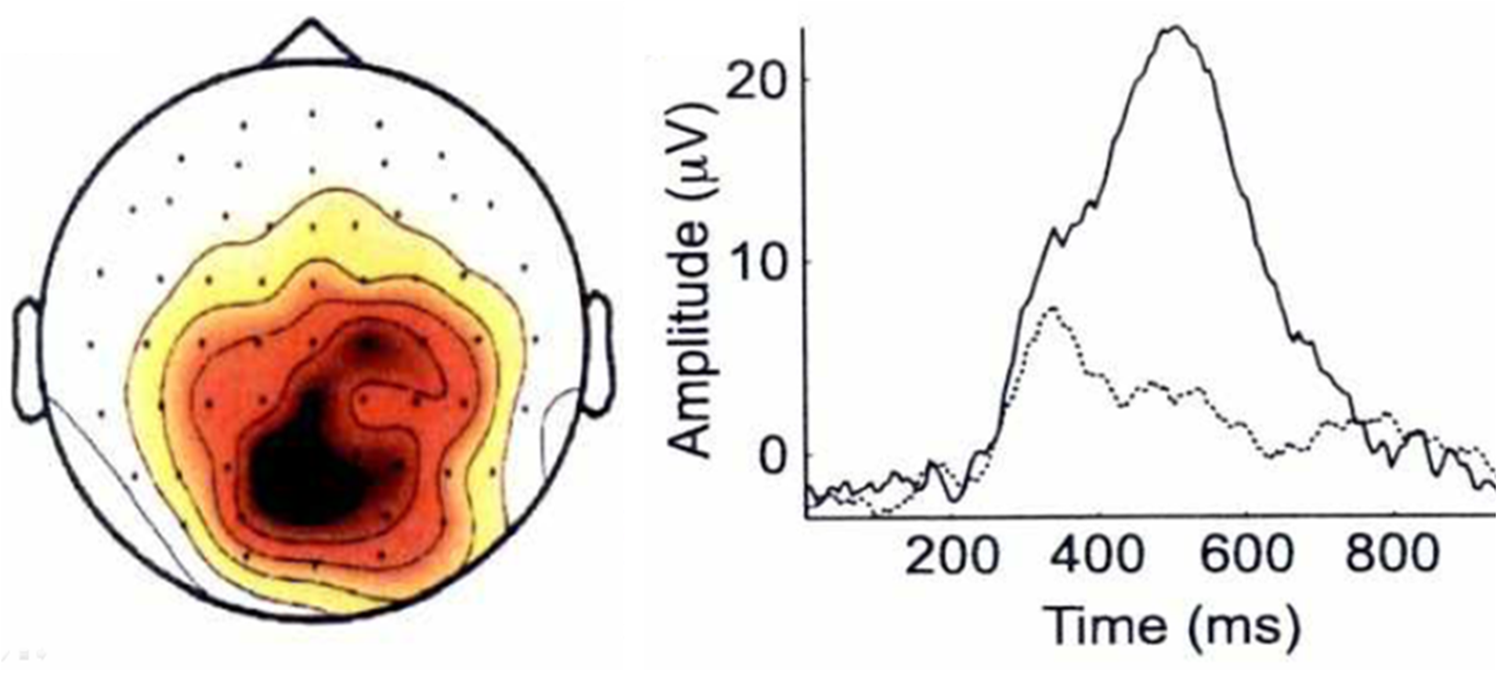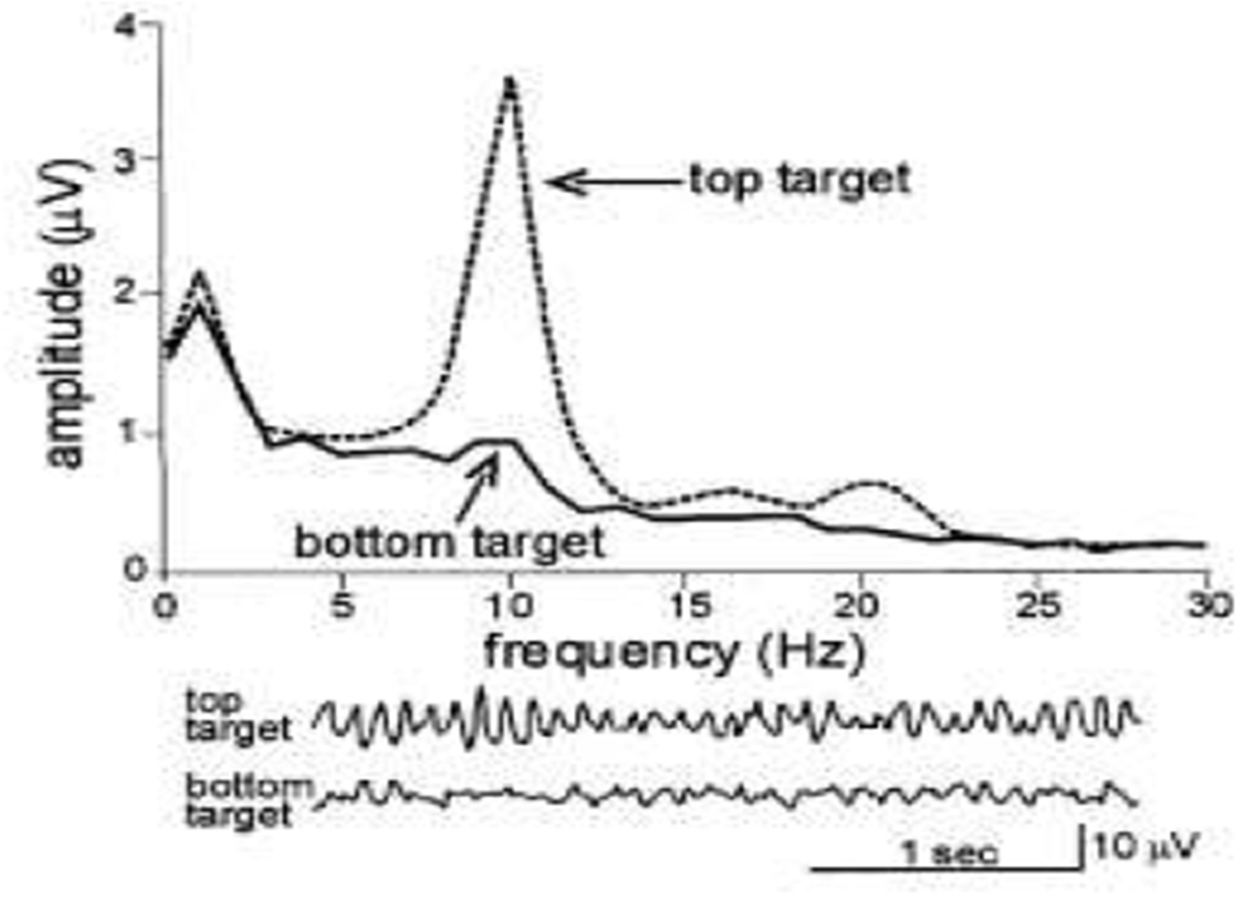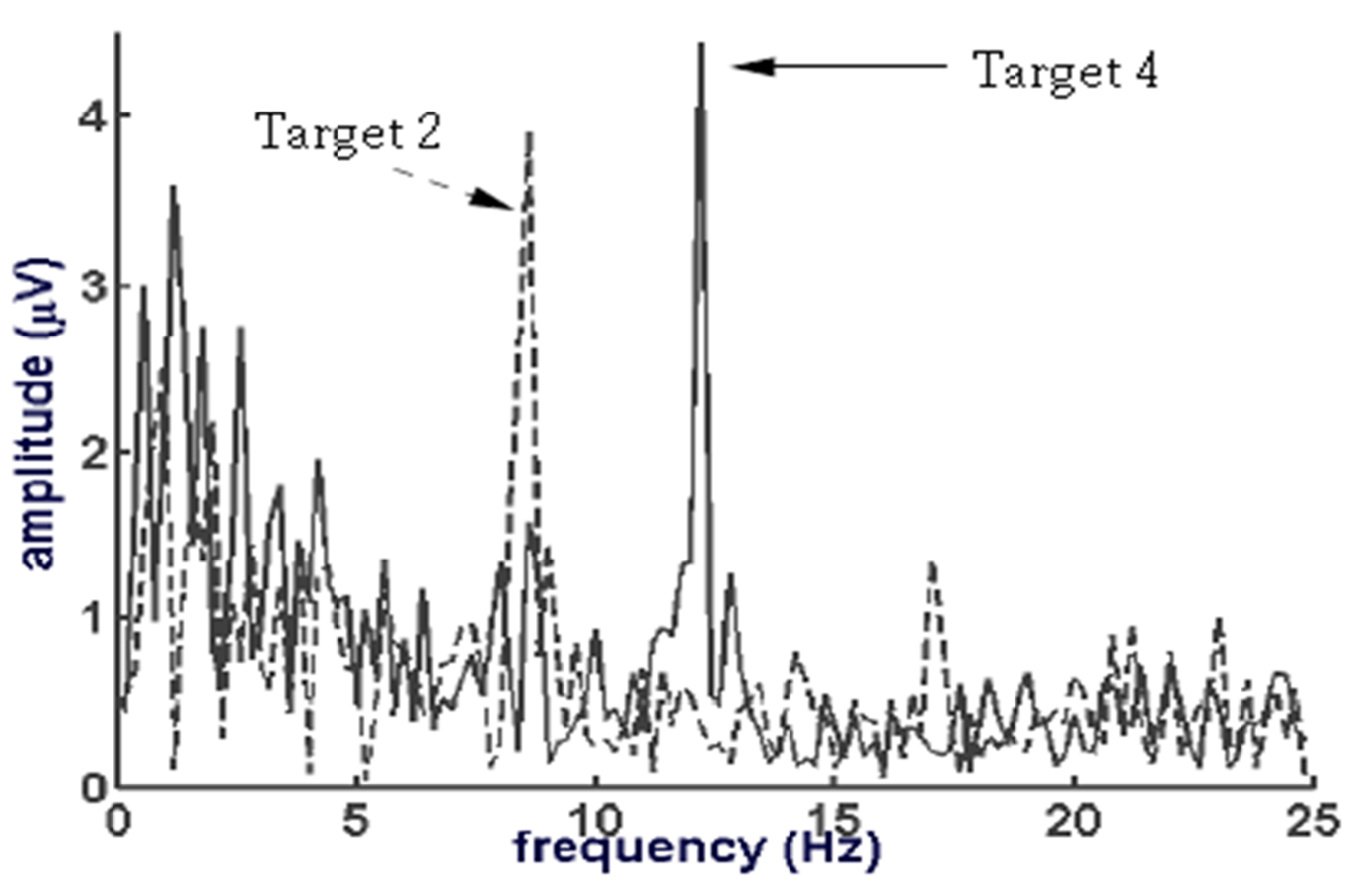What is Brain Computer Interface (BCI)
In basic terms, a BCI involves monitoring brain activity and detecting characteristic brain pattern alterations that the user controls in order to communicate with the outside world. Figure.1 shows the main blocks in the general BCI System. Where the EEG signals are recorded from scalp using brain activity monitoring device. Then, EEG signals are fed to Preprocessing and Feature selection extraction blocks were pre-processing, feature selection, and extraction are done on the EEG signals, and the output will be fed to the Learning block during the training phase or to the Classification block during the testing phase. The Classification result command will be translated to feedback using Device Controller.

Figure.1 General BCI System
During the project, Three BCI prototypes were accomplished. These prototypes are P300, Steady State Visual Evoked potential (SSVEP), and Motor Imaginary (MI).
1. P300 based BCI system:
P300 is an endogenous component of ERPs with a latency of about 300 ms which is elicited by rare and/or significant stimuli (visual, or auditory). It was found in 1965 by (Sutton et al., 1965; Walter, 1965). The amplitude of the P300 potential is largest at the parietal electrode sites, see Figure.2.

Figure.2 Spatial and temporal location of P300
2. MI based BCI system:
Motor-related potentials MRPs are independent of the perception or processing of stimuli. The event which MRPs are related to is the preparation or imagination of movement. They are observable over the sensorimotor cortex before movements’ onset or during movement imagination. Figure.3 illustrates this phenomenon.

Figure.3 MRP frequencies target and non-target
3. SSVEP based BCI system:
SSVEPs are oscillations observable at occipital electrodes, induced by repetitive visual stimulation. Stimulation at certain frequencies leads to oscillations at the same frequency and at harmonics and sub-harmonics of the stimulation frequency. Figure.4 illustrates this phenomenon using two targets.

Figure.4 SSVEP frequencies for two targets